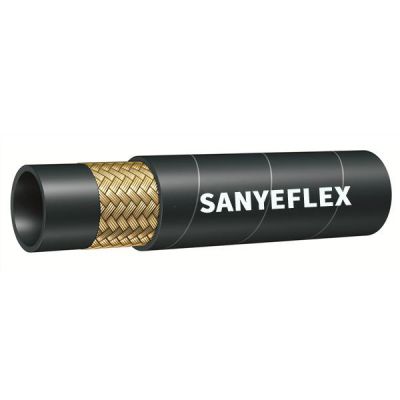Nov. 27, 2024
Textile braided hoses are essential components in various industries, known for their flexibility, durability, and resistance to abrasion. Understanding their lifespan is crucial for maintenance planning and ensuring operational efficiency. This article explores the factors influencing the longevity of textile braided hoses and provides insights into their expected lifespan.
Several factors determine the lifespan of textile braided hoses. These include the quality of materials used, the conditions in which they are operated, and the level of maintenance they receive.
Material Quality: The primary factor affecting the lifespan of textile braided hoses is the quality of the materials used in their construction. High-quality fibers and superior manufacturing processes result in hoses that are more resilient to wear and tear. Cheaper materials may save costs initially but tend to wear out faster, leading to more frequent replacements.
Operating Conditions: The environment in which the hoses are used significantly impacts their durability. Hoses exposed to extreme temperatures, harsh chemicals, or high levels of abrasion will degrade faster than those used in more benign conditions. It's essential to select hoses specifically designed to withstand the environmental challenges they will face.
Maintenance Practices: Regular maintenance is crucial in extending the lifespan of textile braided hoses. Proper inspection, cleaning, and timely replacement of damaged sections can prevent small issues from escalating into major problems. Maintenance schedules should be adhered to diligently to ensure the hoses remain in good condition for as long as possible.
The typical lifespan of textile braided hoses varies widely depending on the factors mentioned above. On average, high-quality hoses can last anywhere from 5 to 10 years under normal operating conditions. However, in more demanding environments, this lifespan may be reduced to 3 to 5 years.
Usage Frequency: Hoses that are used frequently or for continuous operations tend to have shorter lifespans due to constant wear and tear. Conversely, hoses that are used intermittently may last longer as they have periods of rest, allowing them to recover from the stresses of use.
Pressure and Flow Rates: The pressure and flow rates within the hoses also play a significant role in determining their longevity. High-pressure applications can accelerate the wear on the hose material, reducing its lifespan. Ensuring that hoses are rated for the appropriate pressure and flow rates for their specific applications is essential.
Knowing when to replace textile braided hoses is key to maintaining system integrity and avoiding failures. Several signs indicate that a hose is nearing the end of its useful life.
Visible Damage: Any visible signs of damage, such as fraying, cracks, or abrasions on the hose surface, are clear indicators that the hose may need to be replaced. Regular inspections can help detect these issues early.
Leaks: The presence of leaks or seepage around hose connections or along the hose length is a sign that the hose material has degraded. Immediate replacement is necessary to prevent further damage to the system and ensure safety.
Reduced Performance: A noticeable decline in performance, such as reduced flow rates or inconsistent pressure, can indicate internal damage to the hose. Investigating and addressing these issues promptly can prevent more severe failures.
In summary, the lifespan of textile braided hoses depends on material quality, operating conditions, and maintenance practices. On average, they last between 5 to 10 years, but this can vary based on specific use cases. Regular inspections and proper maintenance are essential to maximize their longevity. If you need more information on selecting the right hoses or have specific requirements, please contact us. As a leading supplier of high-quality hoses, we are here to assist you with all your needs.
Our Customer
Tel.: +86 400 0318 111
Email: admin@sanyeflex.com
Add.: #218 Zhongke Street, High-tech Zone, Hengshui City, Hebei Province, China


